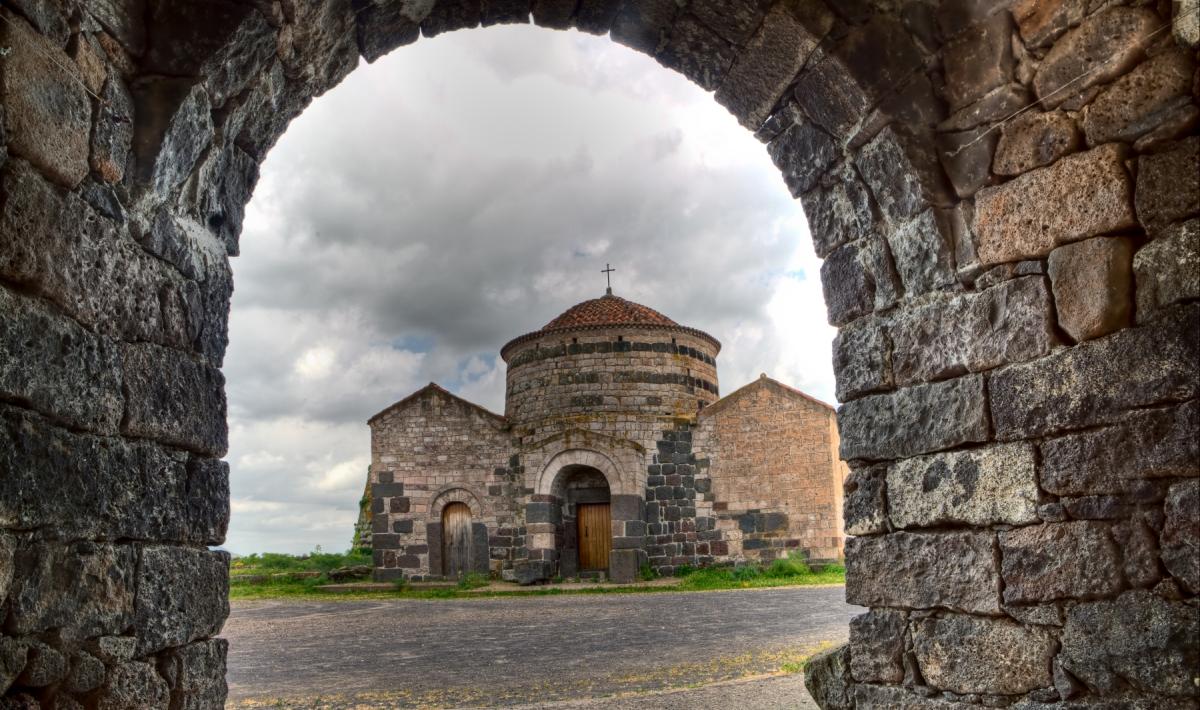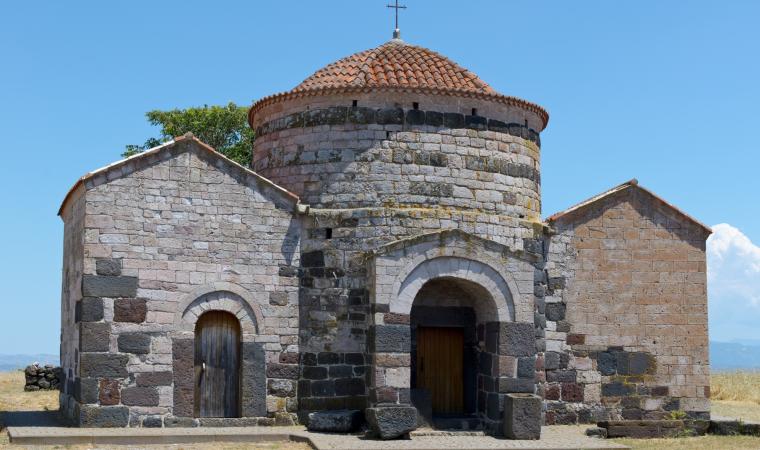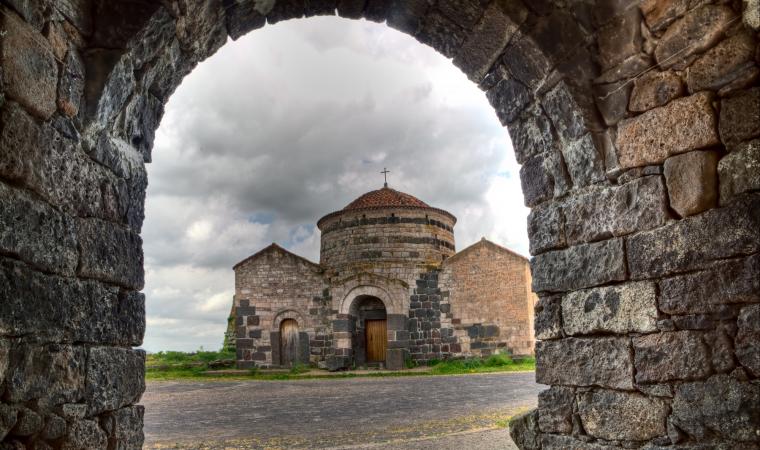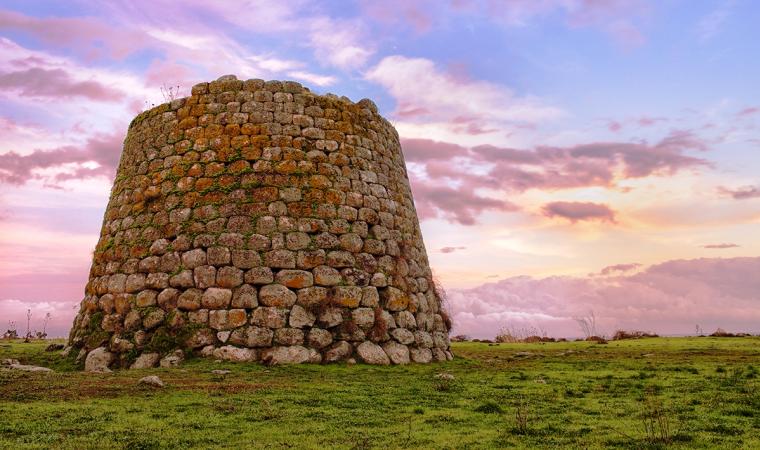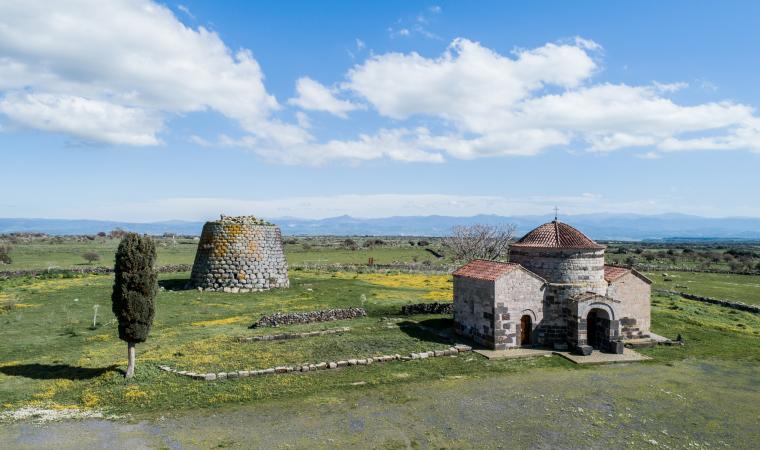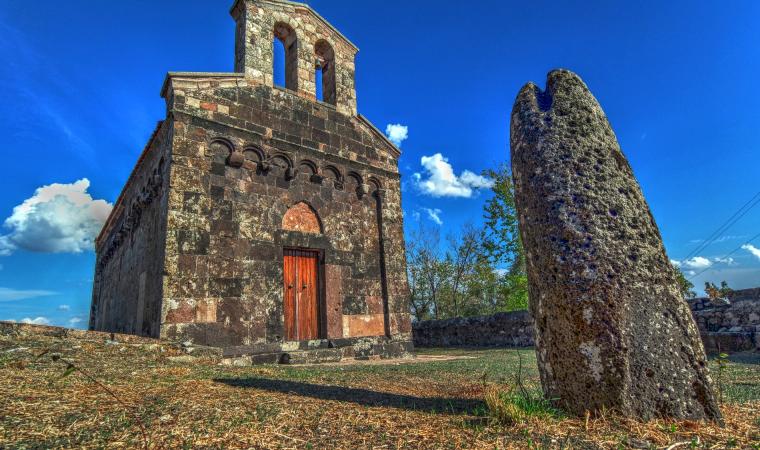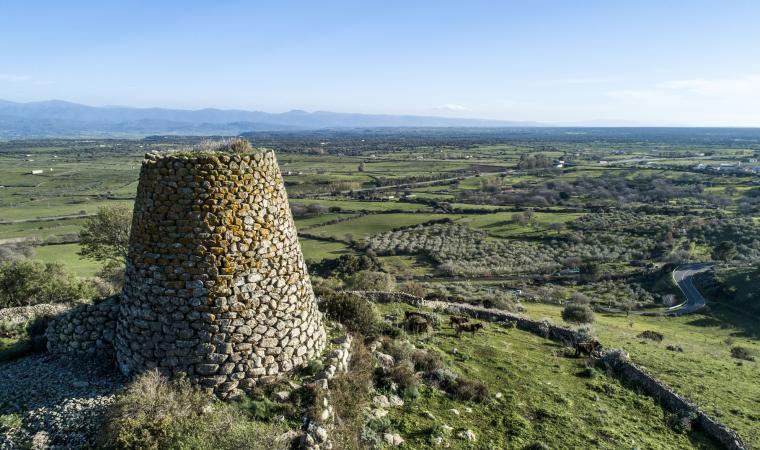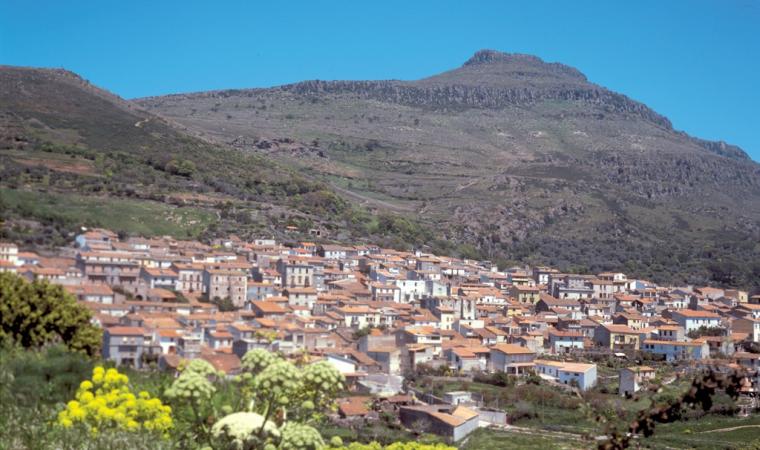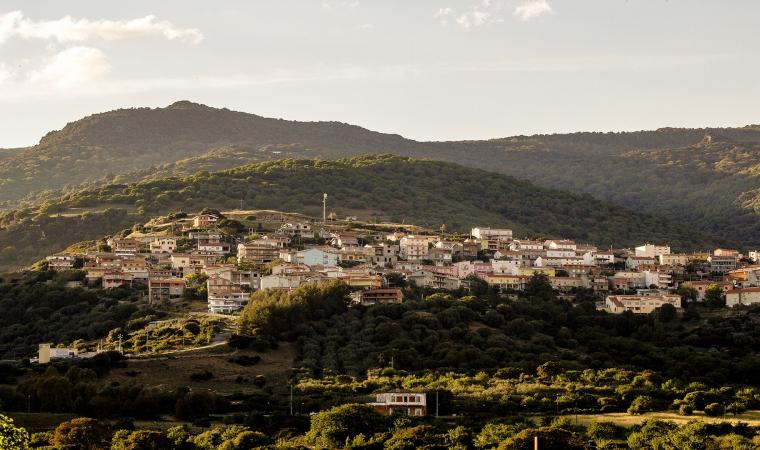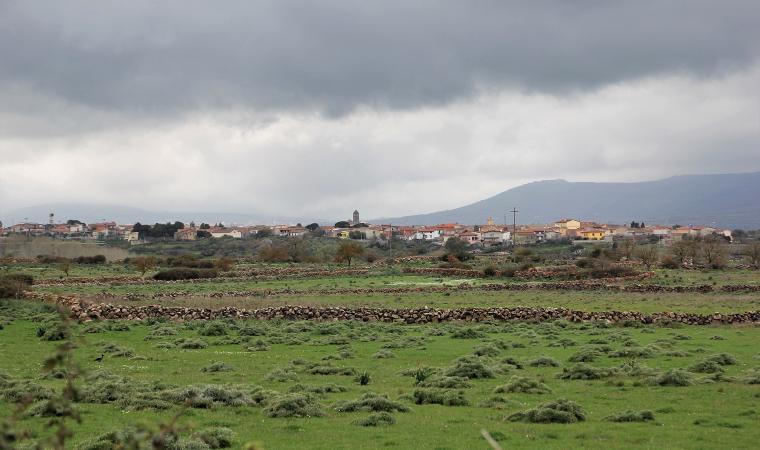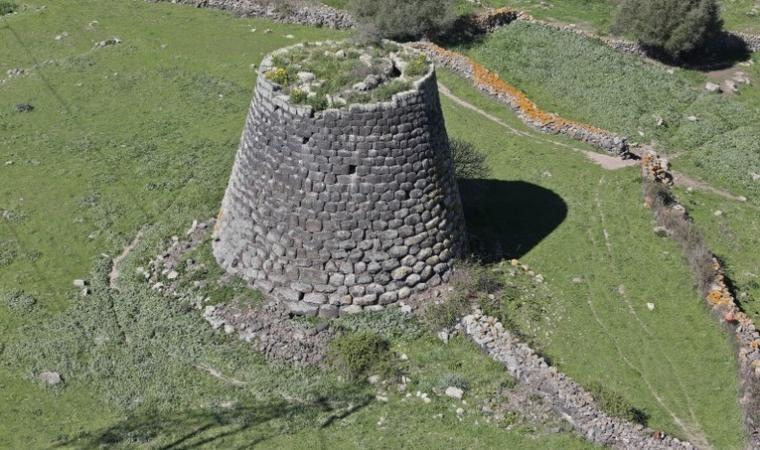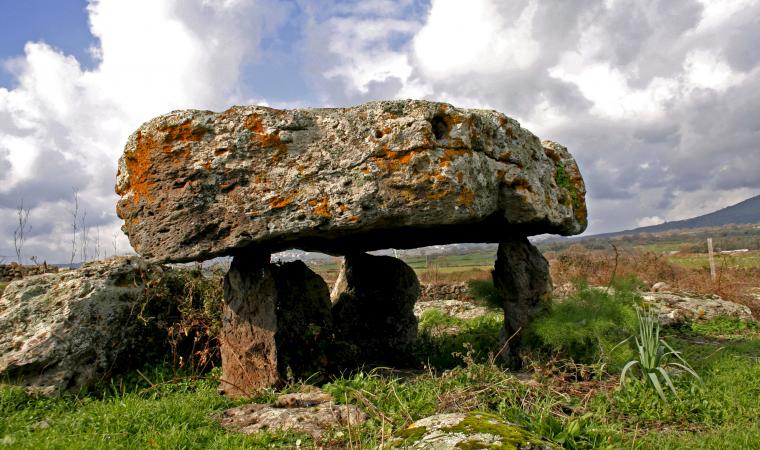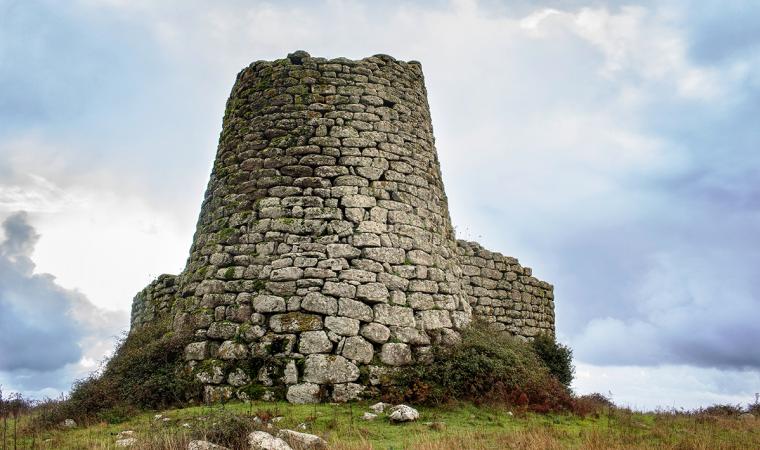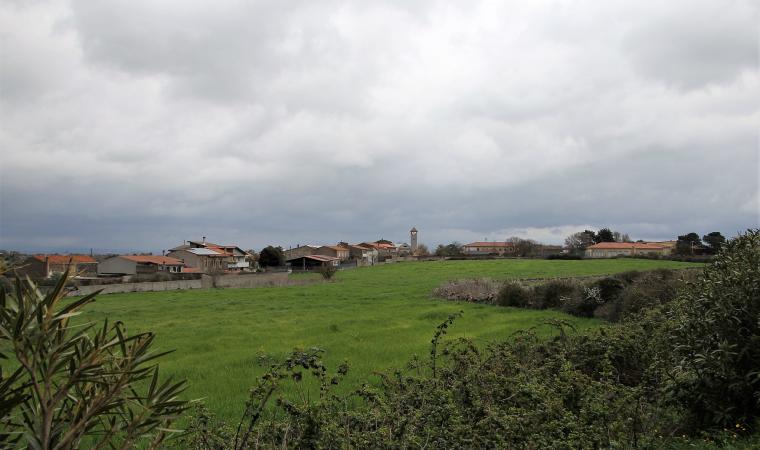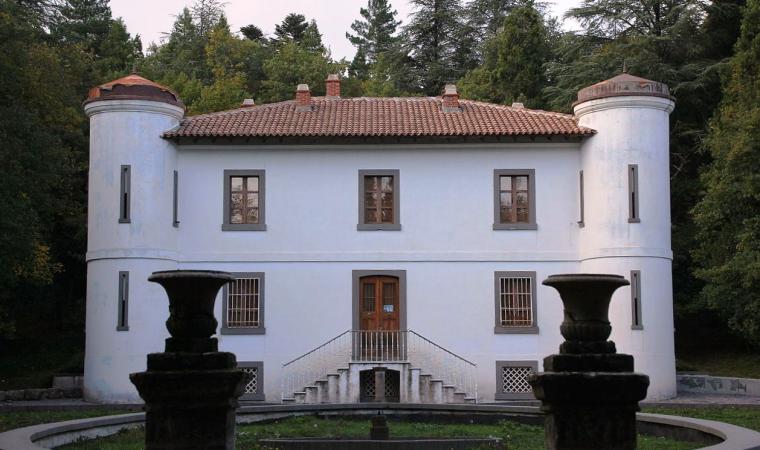It is one of the most unusual Sardinian religious buildings, probably one of the oldest, and it stands on the ruins of constructions dating back to the Nuragic age. The church of Santa Sabina, two kilometres from the village of Silanus, dominates a picturesque rural landscape, next to the single-tower nuraghe to which it gives its name. Inside it, there is evidence of thousands of years of human presence in the archaeological area. The sanctuary is of early Christian or Byzantine origin and it was later rebuilt in the 11th century.
Recently, during the works to check the condition of the foundations, basalt ashlars from the top of the Nuragic tower were uncovered, which had been used for the flooring. Deeper down, traces of masonry from the huts of a Nuragic village emerged, as well as numerous finds from the Roman era, providing evidence of the uninterrupted use of the complex. A fragment of the curved stele of a Tomb of Giants was also found.
You will be surprised when you look at the structure of the church: a central rotunda, with a dome and an apse, alongside which there are two rectangular rooms, also with apses, with sloping roofs. The ashlars are made of basalt and limestone, creating an evocative two-tone effect. The main entrance is preceded by a porch, above which there is a tympanum: here, you will notice two ashlars dug into the surface, used as holy water fonts. The interior has a three-nave layout with a central nave that ends in an apse larger than the other two and with a domed vault, while the lateral aisles have a barrel vault. The charm lies in the small size, in the frugality of the décor and in the play of colour that comes from the different ashlars. Your impression will be that of an intimate, mysterious place of worship. Elegantly positioned in front of the church, are the cumbessias, little stone dwellings used to welcome and provide accommodation to pilgrims during the novena in honour of the saint. An unusual ritual is celebrated at Santa Sabina, that of sos izzadorsos, a vigil that alternates prayer and celebrations.
A Nuragic tower stands a few metres away from the church. It has a diameter of almost 14 metres and eight metres of its height have been preserved. You can walk up the steps to the top and admire the surrounding panorama overlooking the valley. In the area around it, you will see the ruins of two Tombs of Giants, one built using the orthostatic technique, which is where the curved stele found in the sanctuary probably comes from; it is hard to be sure about the second one’s type - the row technique may have been used - because most of the ashlars were removed to build the church. The people who lived in the Nuragic village also had a place for the cult of the water, located 300 metres north of the nuraghe, and is the sacred well of Cherchizzu, one of the smallest discovered to date on the Island. Going down its steps, you will notice the overturned stepped roof of the corridor, while the underground cell, still intact, has a tholos roof.

